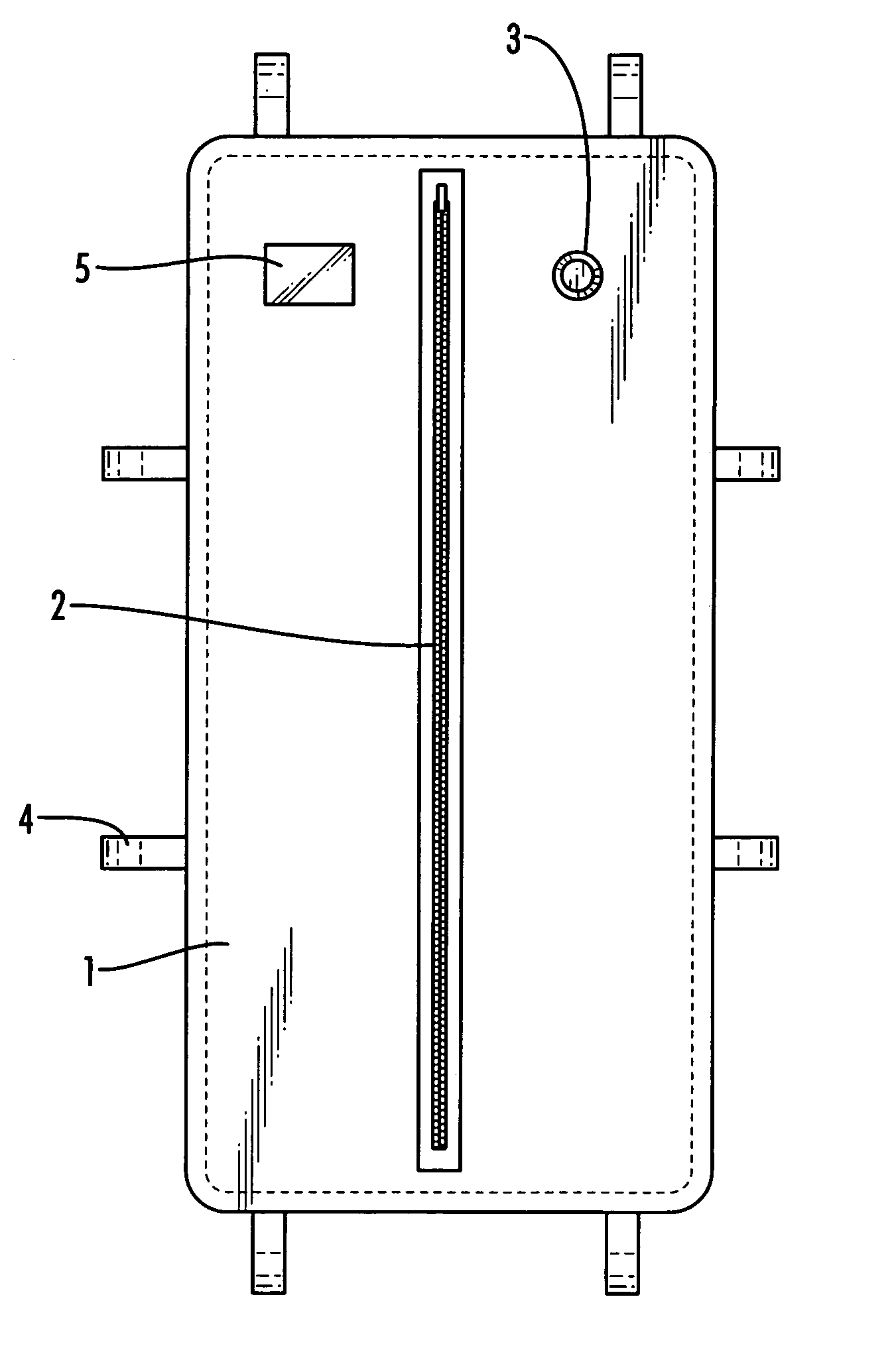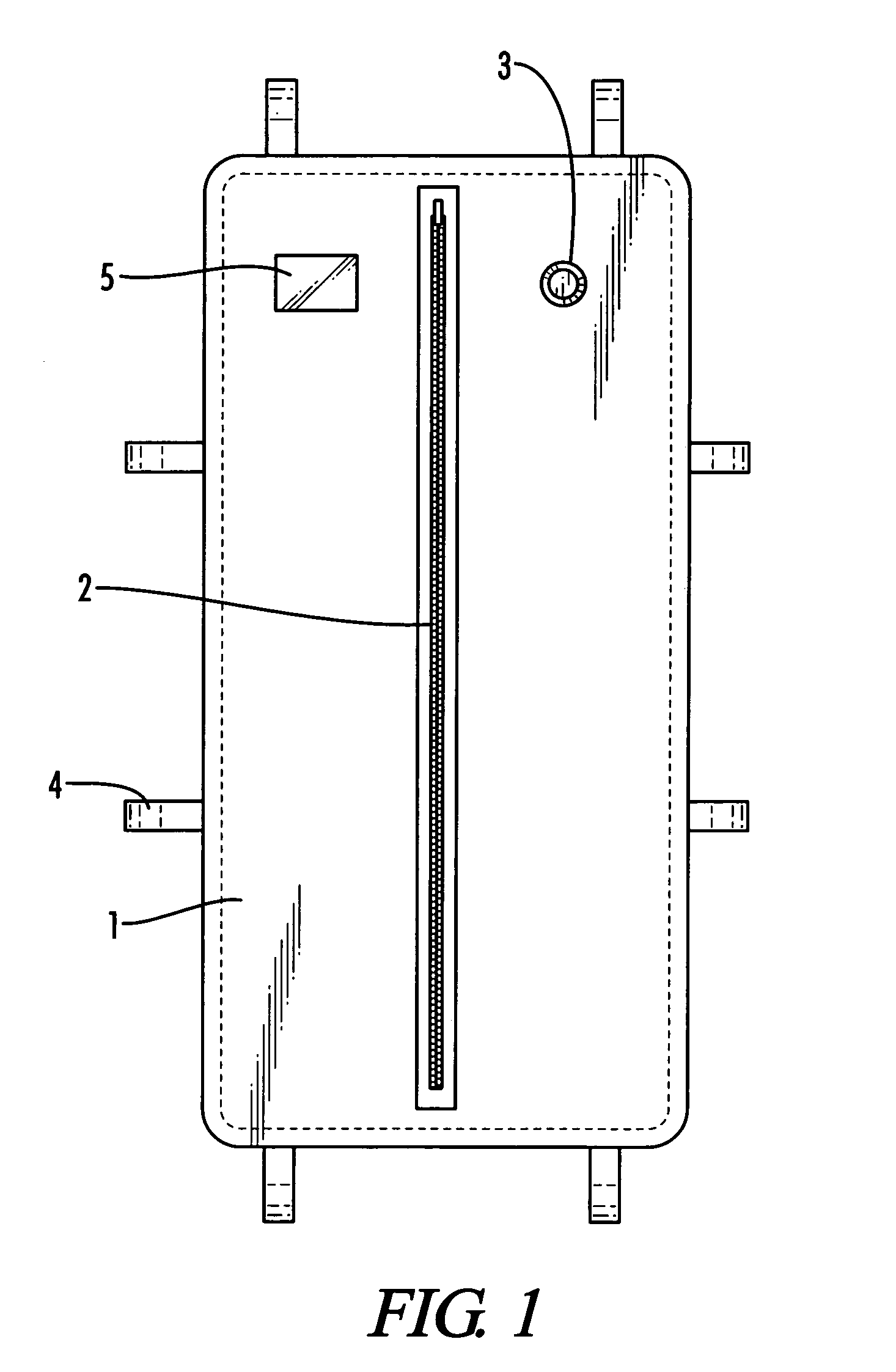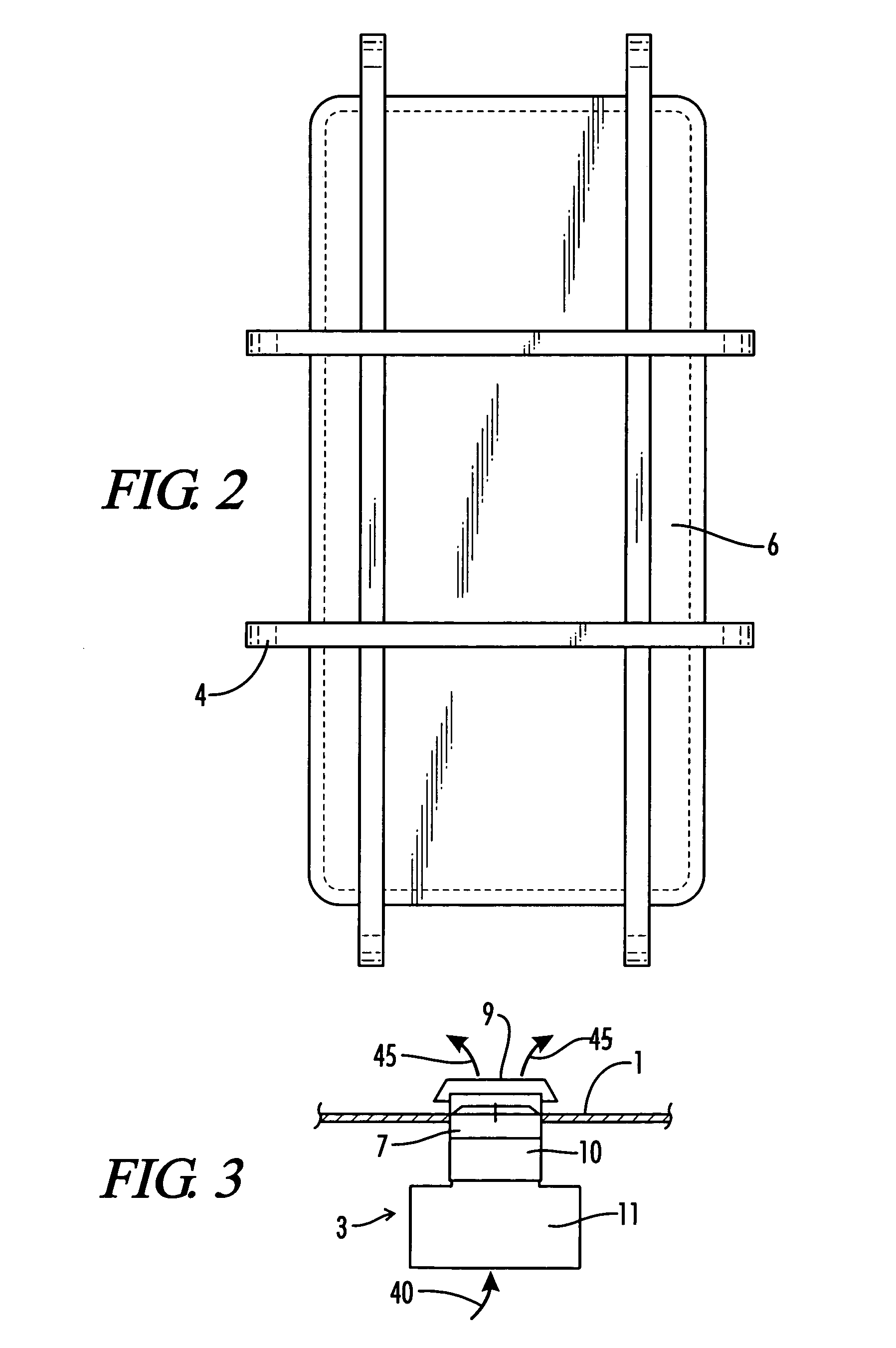Transportable contaminated remains pouch
a technology of contaminated remains and pouches, which is applied in the field of transportation of contaminated remains pouches, body bags and other receptacles, can solve the problems that traditional fabrics and closures (i.e. zip-lockTM-type closures) fail to offer the necessary chemical resistance for the new level of challenges, and little effort has been placed on casualty care, so as to prevent over-pressurization
- Summary
- Abstract
- Description
- Claims
- Application Information
AI Technical Summary
Benefits of technology
Problems solved by technology
Method used
Image
Examples
Embodiment Construction
[0035]Numerous embodiments of the disclosed invention have been conceived to demonstrate the potential breadth and significance of the claimed art. Inclusion of these embodiments in no way serves to limit the potential breath and applicability of the disclosed art to other configurations and or uses.
Chemical Barrier Fabric
[0036]The present invention can accommodate a variety of barrier fabrics, as well as a variety of air exchange mechanisms. The preferred embodiment as shown in FIGS. 1-6 is a contaminated remains pouch fabricated from a high chemical barrier fabric 1, Zytron CSM® (Kappler, Inc., Guntersville, Ala.). This multi-layered, high chemical fabric has a weight of approximately 8.4 oz / yd2. This fabric is disclosed in U.S. Pat. Nos. 4,855,178 and 4,833,010, the contents of which are incorporated herein. The chemical barrier fabric of the present invention may be a fabric of 4,833,010. Examples of this fabric are effective when tested against more than 300 toxic industrial ch...
PUM
| Property | Measurement | Unit |
|---|---|---|
| tensile strength | aaaaa | aaaaa |
| thickness | aaaaa | aaaaa |
| thickness | aaaaa | aaaaa |
Abstract
Description
Claims
Application Information
 Login to View More
Login to View More - R&D
- Intellectual Property
- Life Sciences
- Materials
- Tech Scout
- Unparalleled Data Quality
- Higher Quality Content
- 60% Fewer Hallucinations
Browse by: Latest US Patents, China's latest patents, Technical Efficacy Thesaurus, Application Domain, Technology Topic, Popular Technical Reports.
© 2025 PatSnap. All rights reserved.Legal|Privacy policy|Modern Slavery Act Transparency Statement|Sitemap|About US| Contact US: help@patsnap.com



